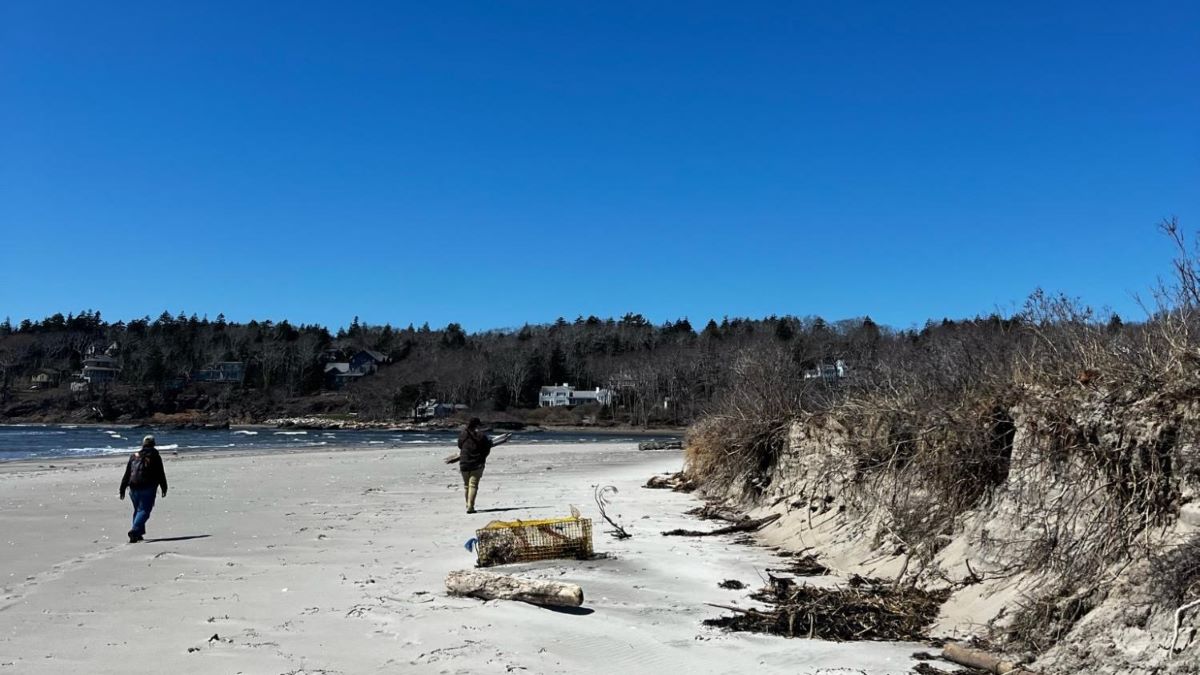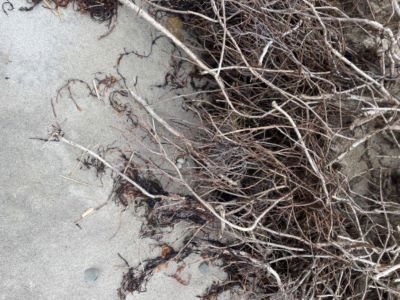
By Erin Campbell, Coastal Birds Biologist
The Coastal Birds Crew is about to head into its fourth week of the season! Not only have we learned how to spot the Piping Plovers, but also track and complete the ultimate egg hunt. That’s right! Nests are back on Maine’s southern beaches. While some plovers are still perfecting their best practice nests, others have started to build up a nest of four eggs. The first nest we spotted was on Wells Beach on April 25! And we are now seeing the plovers nest more on Wells and establish first nests on Ogunquit, Old Orchard, and Higgins. The team suspects that the more northern beaches like Popham and Reid State Park should be seeing nests anytime now.
Over the past couple of weeks, we have seen the efforts of homeowners, towns, and community members blossom to help protect our essential dune habitats and have eyes on the Piping Plovers. Due to the past winter storms and even some spring storms, the dune habitat on a majority of the plovers’ favorite beaches was greatly impacted. In some cases, the dune was washed out and is now a cliff; in other places dunes have been flattened and covered by seaweed and debris. The habitat has most definitely shifted from last year. Permitted and appropriate dune restoration is pertinent to aid in the protection of plovers, combat the rising sea levels, and ensure the safety of beach residents. Newly planted dune grass was spotted at Goose Rocks and Fortunes Rocks to help stabilize the sand and extend the dunes. In addition, state officials asked Mainers to donate their Christmas trees to Popham Beach State Park. Trees are now lined up at the beach to help restore the flattened dunes, collect sand, and slow down erosion.

The plovers are making their home for the next couple of months in these dune habitats to lay their eggs and raise their chicks. Despite the changing habitats they found on their return to Maine, the birds find the most creative spots to nest— like on top of a 12-foot dune or nuzzled behind the dangling dune roots.
Plovers are small, but they sure are mighty and resilient! The team suspects it will have its work cut out for them this season to help track, count, and protect not only the new chicks but the adult plovers as well. Keep an eye out for more information on our Instagram page – @mainecoastalbirdsproject and we’ll be back with more updates soon!
